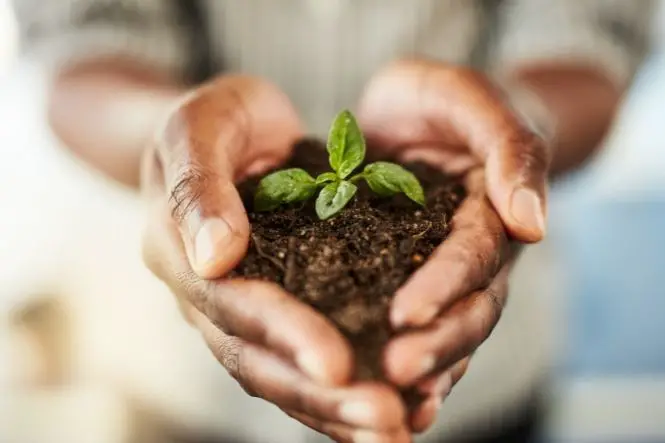Potatoes are tubers produced by the stems of the plant called Solanum tuberosum, which is part of the same family as tomatoes, peppers and aubergines. The plant produces tubers to store nutrients for itself, and to create new plants the next year. However, these tubers are also rather good to eat.
Table of Contents
History of Potatoes
People first grew potatoes in Peru about 6,000 years ago, and the Peruvian Quechua language had over 1,000 words for potatoes and potato varieties. There are about 450 varieties of potatoes grown in the UK.
Chitting the Potatoes
Potatoes are grown from seed potatoes, rather than from seeds. Seed potatoes need to have shoots and roots on them before they are planted. This is called ‘chitting’. Put the potatoes (or halved potatoes if it looks like there are a lot of eyes) in the bottom part of an egg box in a light room (but not in direct sunlight) with the end with the most ‘eyes’ at the top. The ‘eyes’ are where the shoots will form, and the egg box just stops the potatoes rolling around.
The Pot for the Potatoes
Potatoes can grow in a plastic bucket or a large pot. This must have drainage holes at the bottom to stop the compost getting too soggy. Broken pottery, stones or gravel at the bottom also help any extra water to drain away.
Planting the Potatoes
Put a layer of compost, or a mixture of soil and compost, on top of the pottery or stones, and put three potatoes on the compost with the roots down and the shoots up. Cover the potatoes with compost until the shoots are covered.
Potatoes planted in a container in August or early September will be ready for Christmas lunch – but protect them from the frost by gently covering with fleece, old blankets or newspaper at night.
Earthing Up
Once about 15 cm of shoots are showing through the compost, ‘earth up’ the potatoes by gently covering with another layer of compost, until the top leaves are just showing through. Keep going until the post is nearly full. This makes the shoots grow longer, as they keep growing up to the light, and increases the amount of stem that can produce potatoes. Earthing up also stops the potatoes going green. Green potatoes, and potato leaves, stems and fruit, contain a toxin called solanine, which in large quantities can make you ill.
Watering
Water the potatoes when the compost just under the surface feels dry, but do not water them too much, otherwise they might rot.
Harvesting
Harvest the potatoes once the shoots (known as haulms) have flowered (for new potatoes) or gone yellow (for old potatoes). Gently tip out the compost and pick out the potatoes. The compost can go on the compost heap or back into the garden.
Watching Potatoes Grow
Take pictures or measure heights every week to see how fast the potatoes grow, and see how many potatoes there are and how much they weigh, and compare this to how much the seed potato weighed. And of course see if the potatoes taste good.
Comparing Conditions
Try putting one pot of potatoes in full sunlight, one in sunlight and shade and one in the dark – which one does better? Or try using soil, compost, or a mixture of compost and soil, and see which is best.




